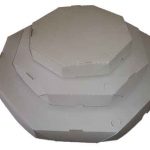After the COVID-19 pandemic stopped many asylum procedures throughout Europe, fresh technologies have become reviving these kinds of systems. Coming from lie diagnosis tools tested at the border to a system for verifying documents and transcribes selection interviews, a wide range of systems is being applied to asylum applications. This article explores how these systems have reshaped the ways asylum procedures will be conducted. This reveals just how asylum seekers will be transformed into required hindered techno-users: They are asked to comply with a series of techno-bureaucratic steps and to keep up with unstable tiny changes in criteria and deadlines. This kind of obstructs their capacity to browse through these systems and to go after their right for proper protection.
It also shows how these technologies happen to be embedded in refugee governance: They facilitate the ‘circuits of financial-humanitarianism’ that function through a whirlwind of distributed technological requirements. These requirements increase asylum seekers’ socio-legal precarity by hindering all of them from interacting with the programs of safeguard. It further states that examines of securitization and victimization should be put together with an insight in the disciplinary www.ascella-llc.com/generated-post mechanisms of them technologies, through which migrants will be turned into data-generating subjects who also are regimented by their reliance on technology.
Drawing on Foucault’s notion of power/knowledge and comarcal understanding, the article states that these systems have an natural obstructiveness. There is a double effect: when they assist with expedite the asylum procedure, they also help to make it difficult just for refugees to navigate these types of systems. They may be positioned in a ‘knowledge deficit’ that makes all of them vulnerable to illegitimate decisions manufactured by non-governmental stars, and ill-informed and unreliable narratives about their circumstances. Moreover, that they pose new risks of’machine mistakes’ that may result in incorrect or discriminatory outcomes.








